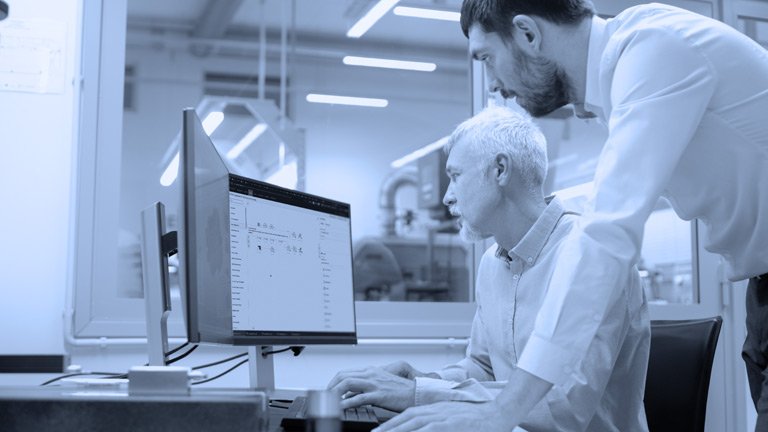
The IoT and AI are separate technology trends that are both making waves in industry. The IoT can connect devices together, giving and receiving signals like a nervous system. In contrast, AI can act as a brain, using data to make informed decisions that control the overall system. When joined together, the two are capable of delivering intelligent, connecting systems that can self-correct and self-heal themselves—forming what we term the Artificial Intelligence of Things (AIoT).
Flow Studio enables processing, harmonizing and filtering data in real time at the edge, then using AI to learn from the data collected in order to implement predictive maintenance.
Conventional IoT technologies such as cloud computing and machine-to-machine (M2M) communication have allowed manufacturers to complete three key tasks: connect machines, store data and make that data meaningful. Now, with the introduction of AIoT, they can benefit from a fourth capability—to act.
However, to make AIoT feasible, manufacturers need a data management system that can support fast decision making. While cloud storage is possible, analyzing data closer to its source—at the edge—takes AIoT to the next level.
Streamlined production
To unlock the power of AI, decisions need to be made with as little latency as possible. If the AI system receives an alert that there is a machine fault, or the speed or movement pattern of a machine should be altered for more productive operations, it can act on these insights immediately and halt or alter production. By integrating the AI system at the edge, instead of the cloud, manufacturers can unlock the value of ultralow latency, allowing machines to be switched off as quickly as possible and fewer products are damaged or defective.
In order to integrate AIoT at the edge, industry leaders must first build an AI model offline. They must then train the model using previously stored datasets until it meets requirements before exporting and applying it online with new live data.
However, applying the model to real-time data in an online scenario is very different to testing it on stored data that has already been sorted in the training stage. Real-time data hasn’t been filtered or categorized, and each set may arrive at different times, creating a chaos of information for the AIoT.
Enter edge analytics
To make sense of the data, it must be processed before it can be used by the AIoT. That’s where edge analytics come in. As an example, the Crosser Platform is a low-code software platform for streaming analytics, automation and integration for any edge, on-premise or cloud. The aim is to remove complexity, simplify development and to enable non-programmers to innovate faster with a dramatically lower total cost of ownership.
A system such as the Crosser Platform can help prepare the data in a number of ways before it reaches the AIoT. For example, it can harmonize data from the wide variety of machines on the factory floor, which might be in different formats as it has travelled in from multiple sources.
Data from different sources and formats are aggregated by the platform at regular intervals. In addition, if the data sources have different sampling rates, then the platform can fill in intermediate values so that the models can be updated with new data from all the sensors in each update. It can also create different types of windows over time series data.
The platform can also be used for feature extraction. Depending on the model being used, additional features may need to be created out of the raw data. This could be, for example, taking vibration data and converting it from the time domain into the frequency domain. All of these steps streamline the data before it reaches the AIoT.
The Gebhardt Example
This is how Crosser’s platform allowed warehouse automation solution manufacturer Gebhardt Intralogistics Group, Sinsheim, Germany, to implement an AIoT strategy. Gebhardt produces intelligent shuttles to move containers quickly throughout a warehouse. It was looking for an anomaly detection solution to identify operational faults caused by vibrations on the shuttle to minimize maintenance costs.
Using Crosser’s Flow Studio, Gebhardt was able to process, harmonize and filter data in real time at the edge and then use AI to learn from the data collected in order to implement predictive maintenance for increased machine availability and extended asset lifetime.
It’s true that machine intelligence holds great power, but other supporting technologies can help uncover its full potential. Industry leaders who integrate the AIoT at the edge can reap the benefits of an efficient and reactive control system—optimizing processes, fast.
Source: https://www.sme.org/technologies/articles/2022/february/artificial-intelligence-of-things-edge-analytics-create-harmony-at-gebhardt/